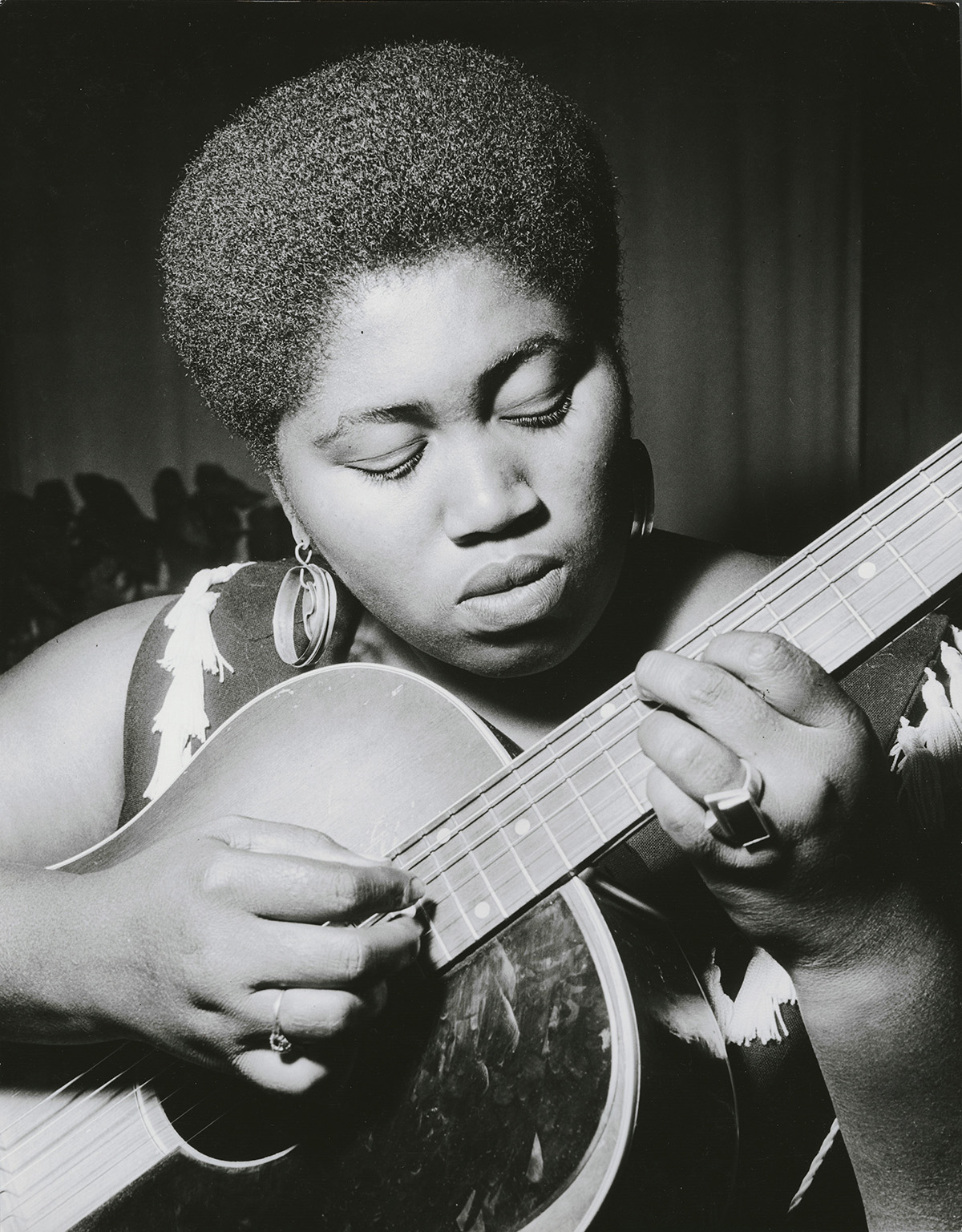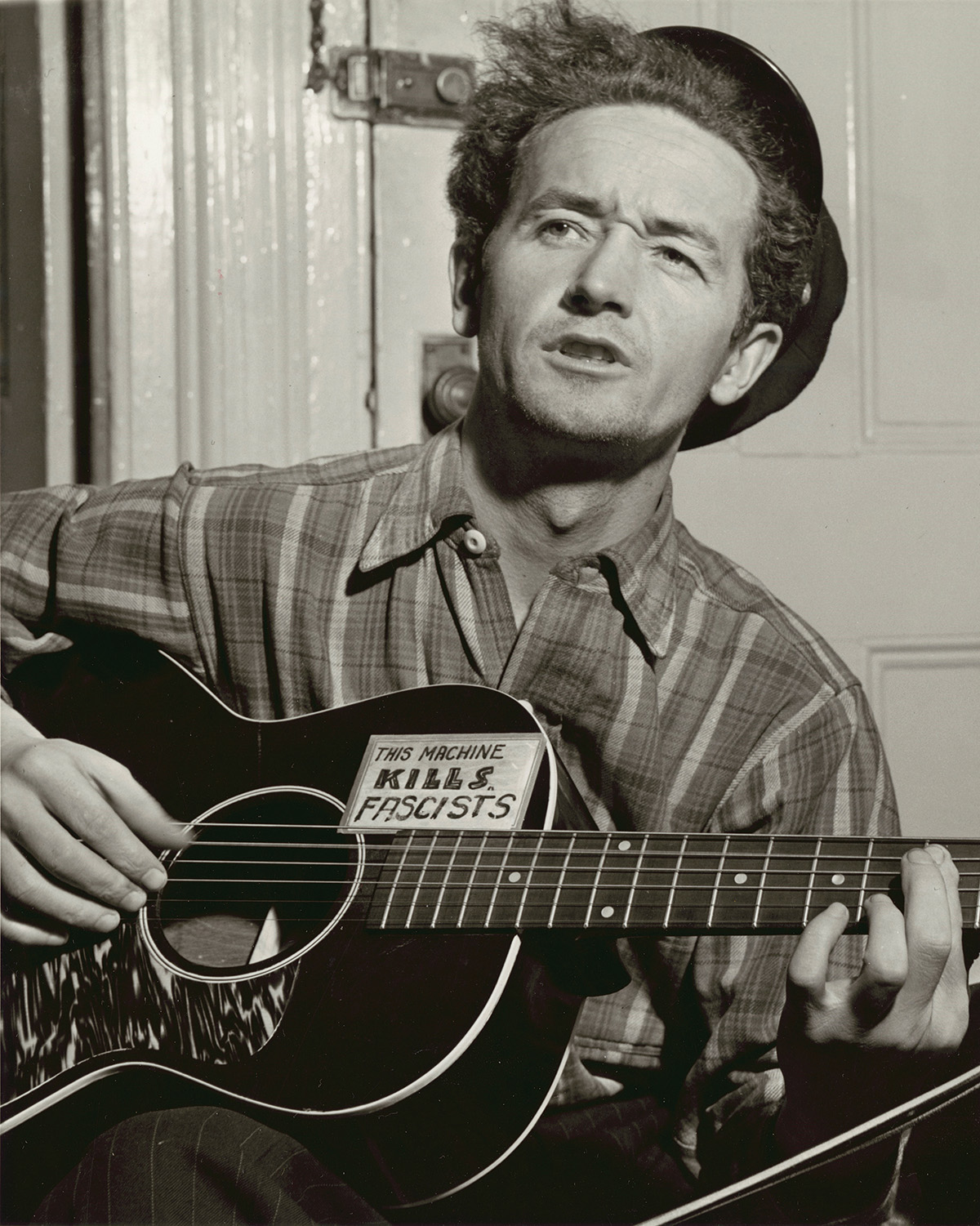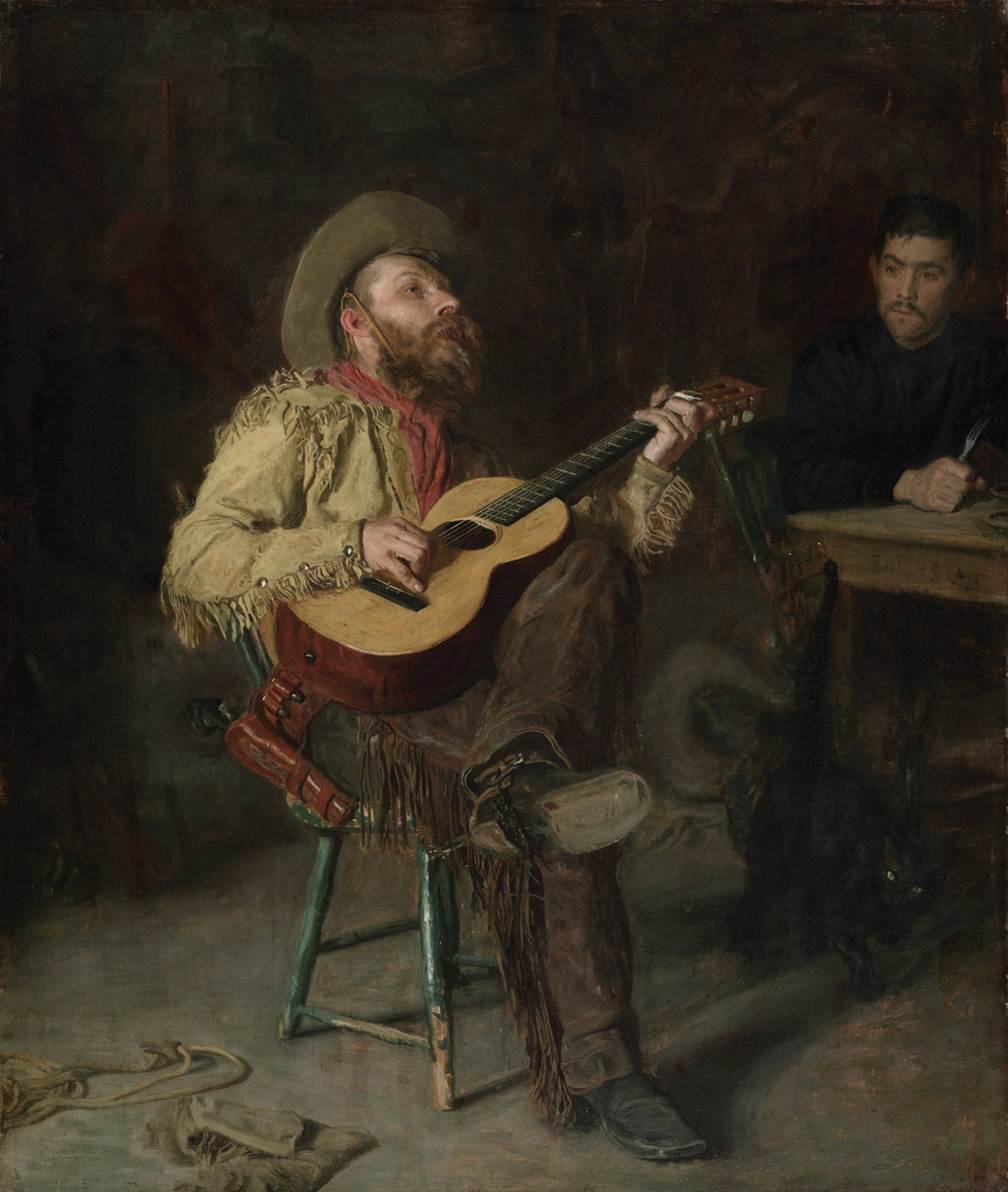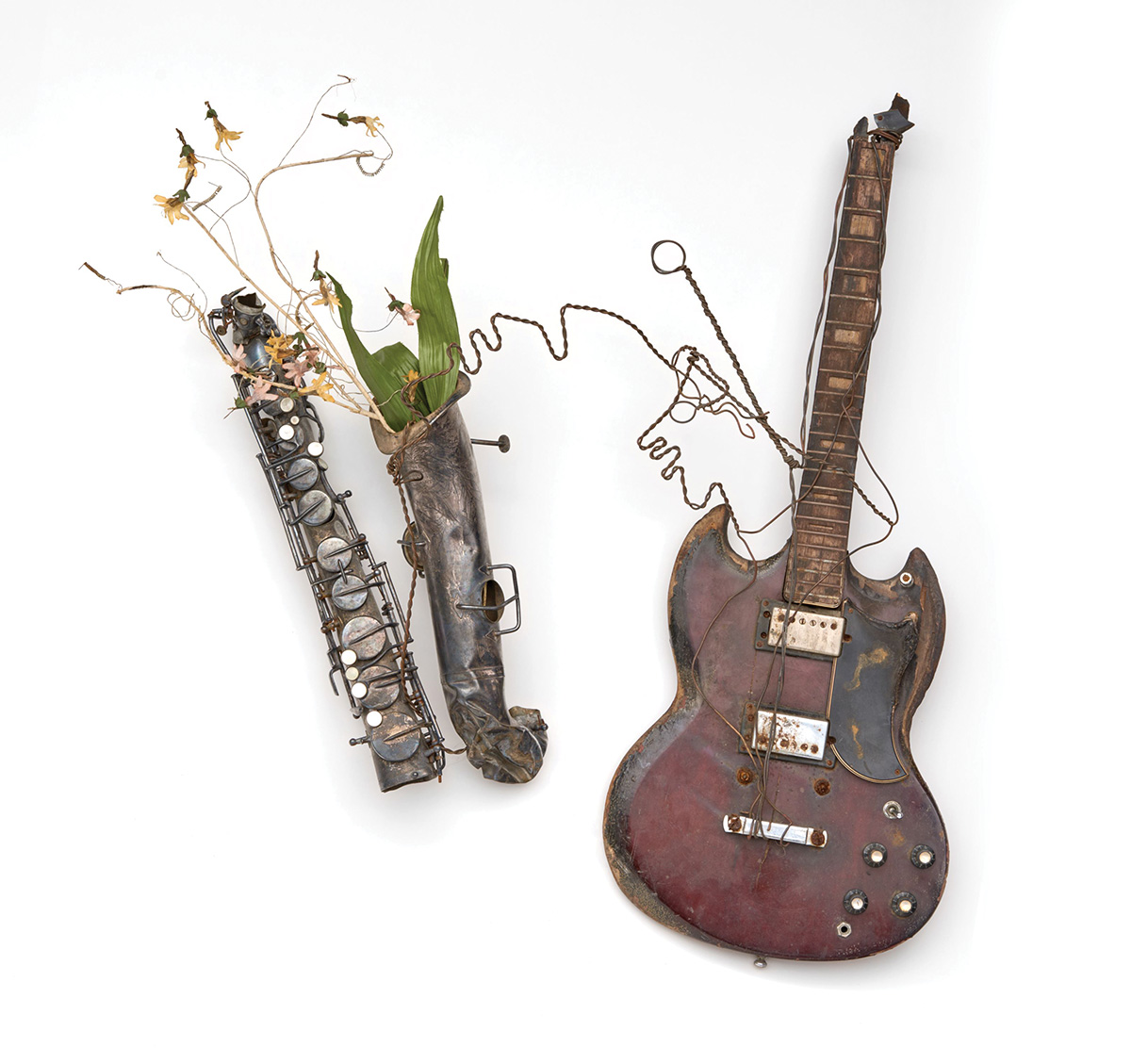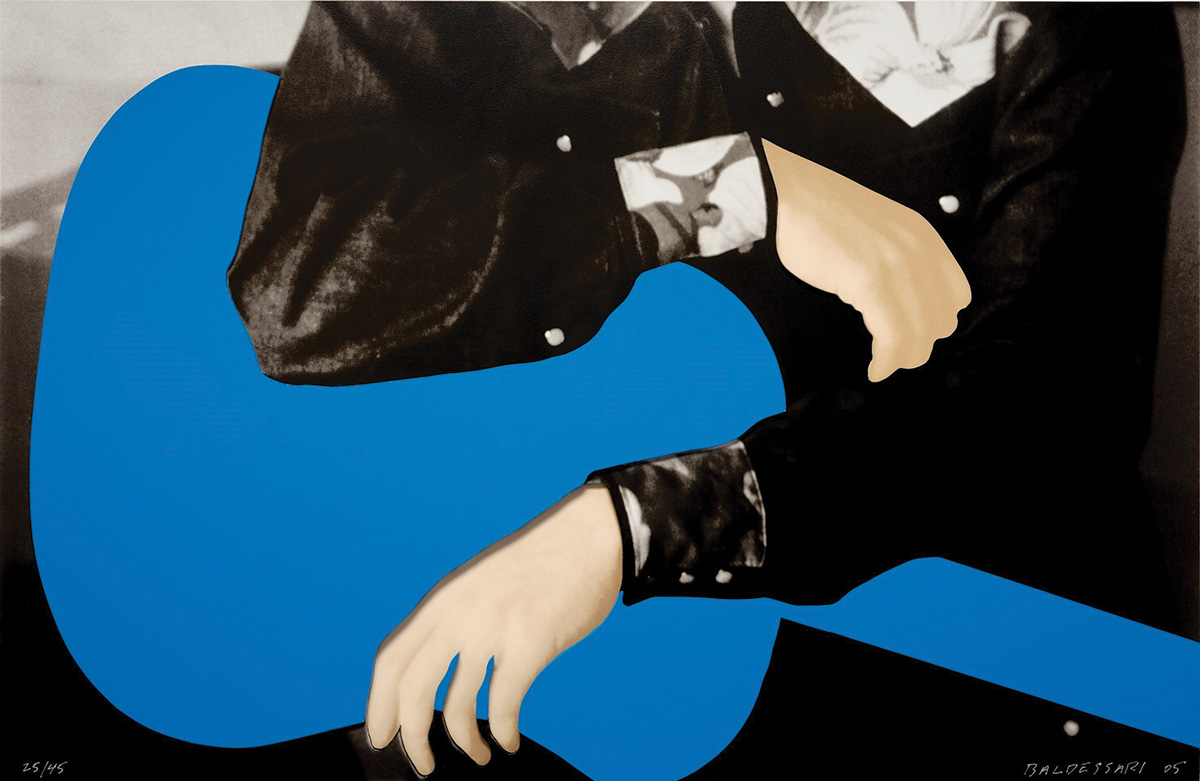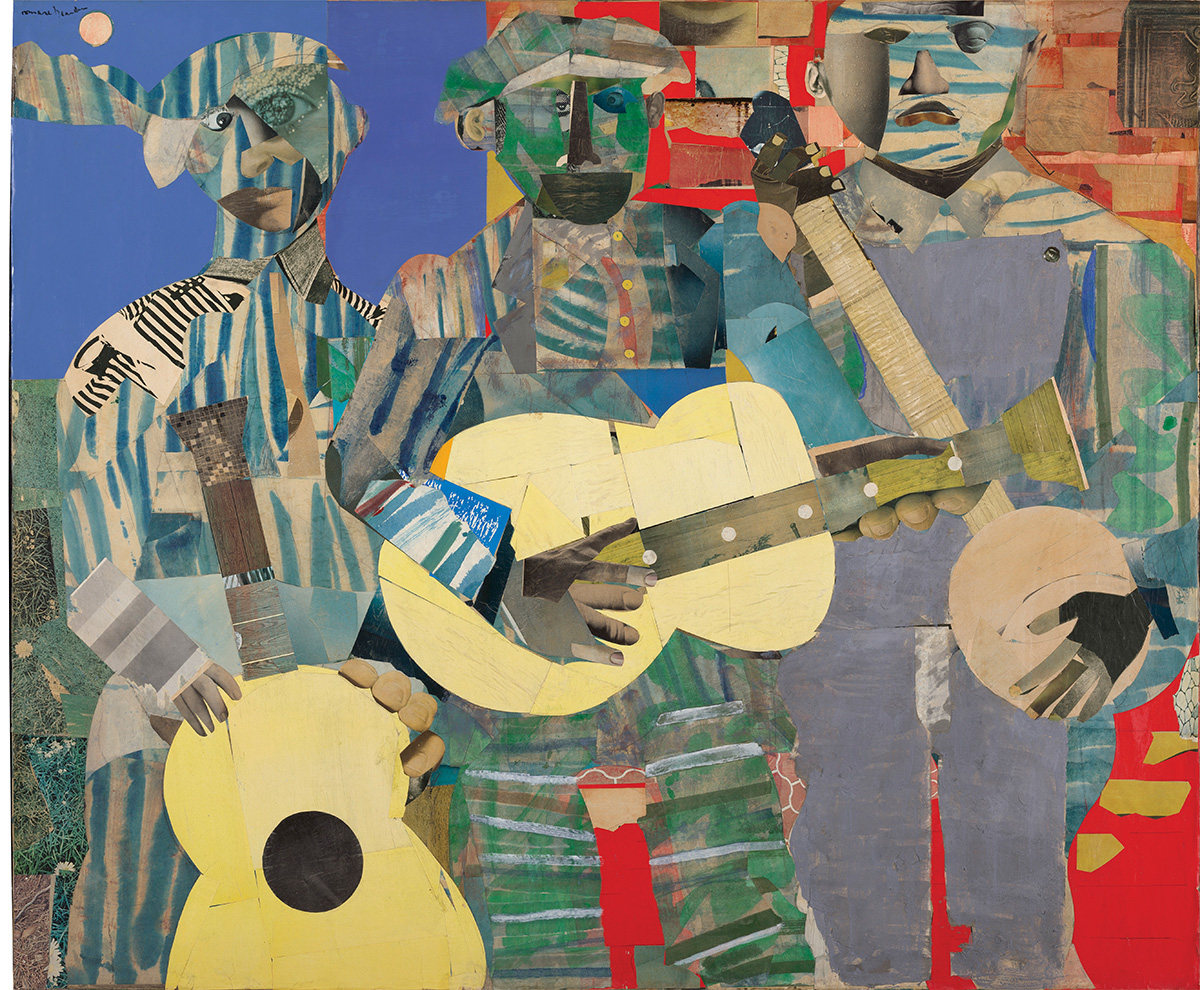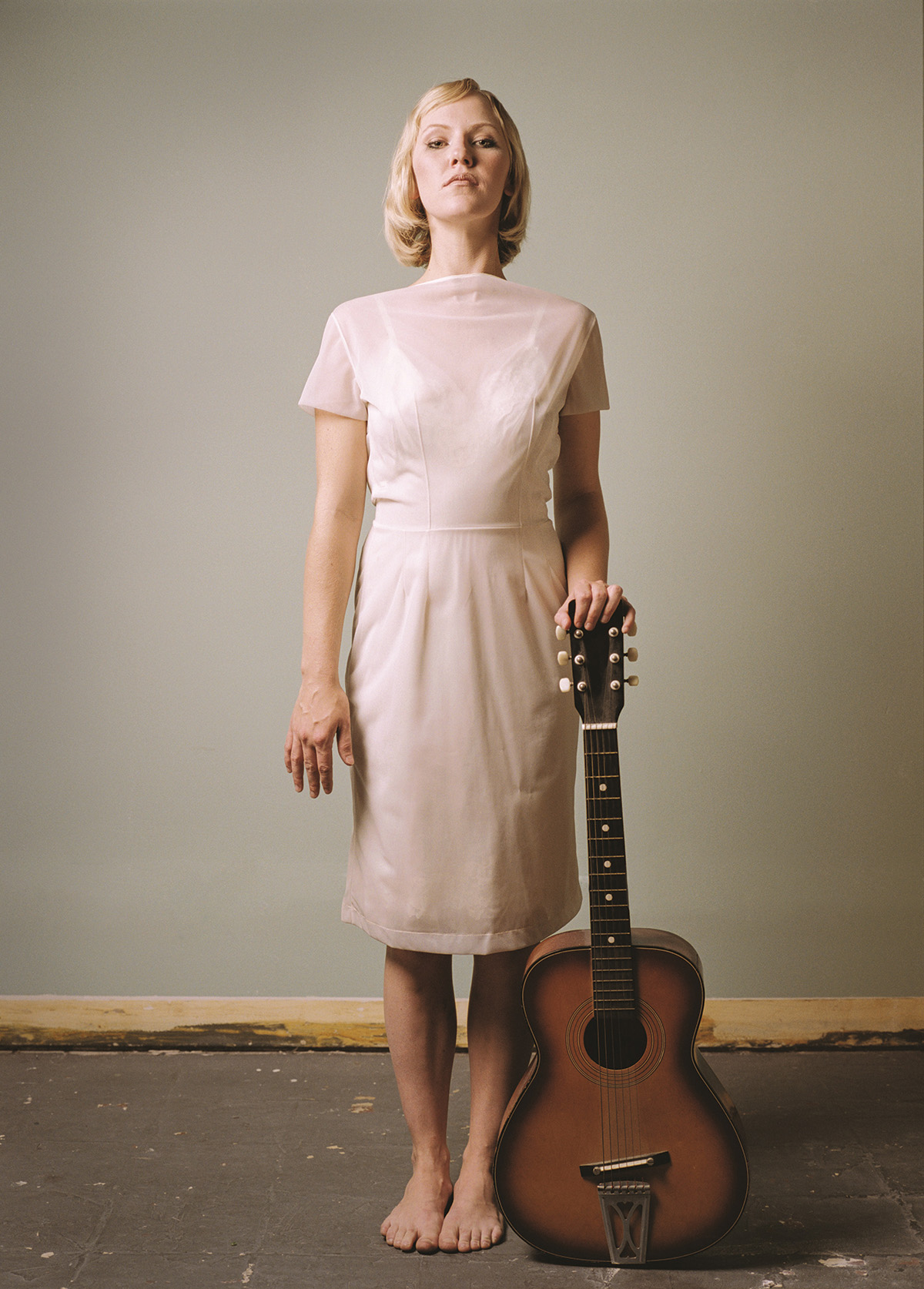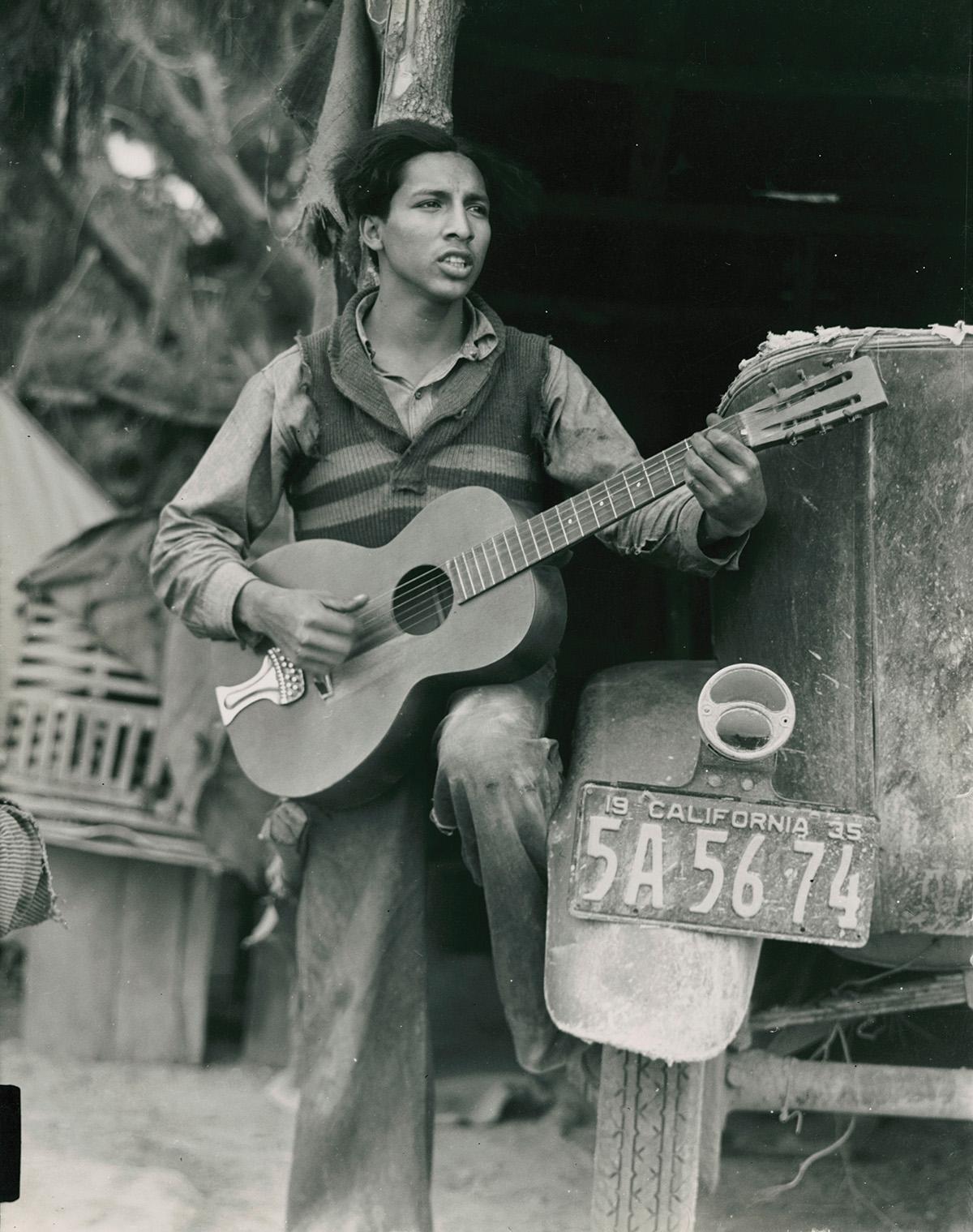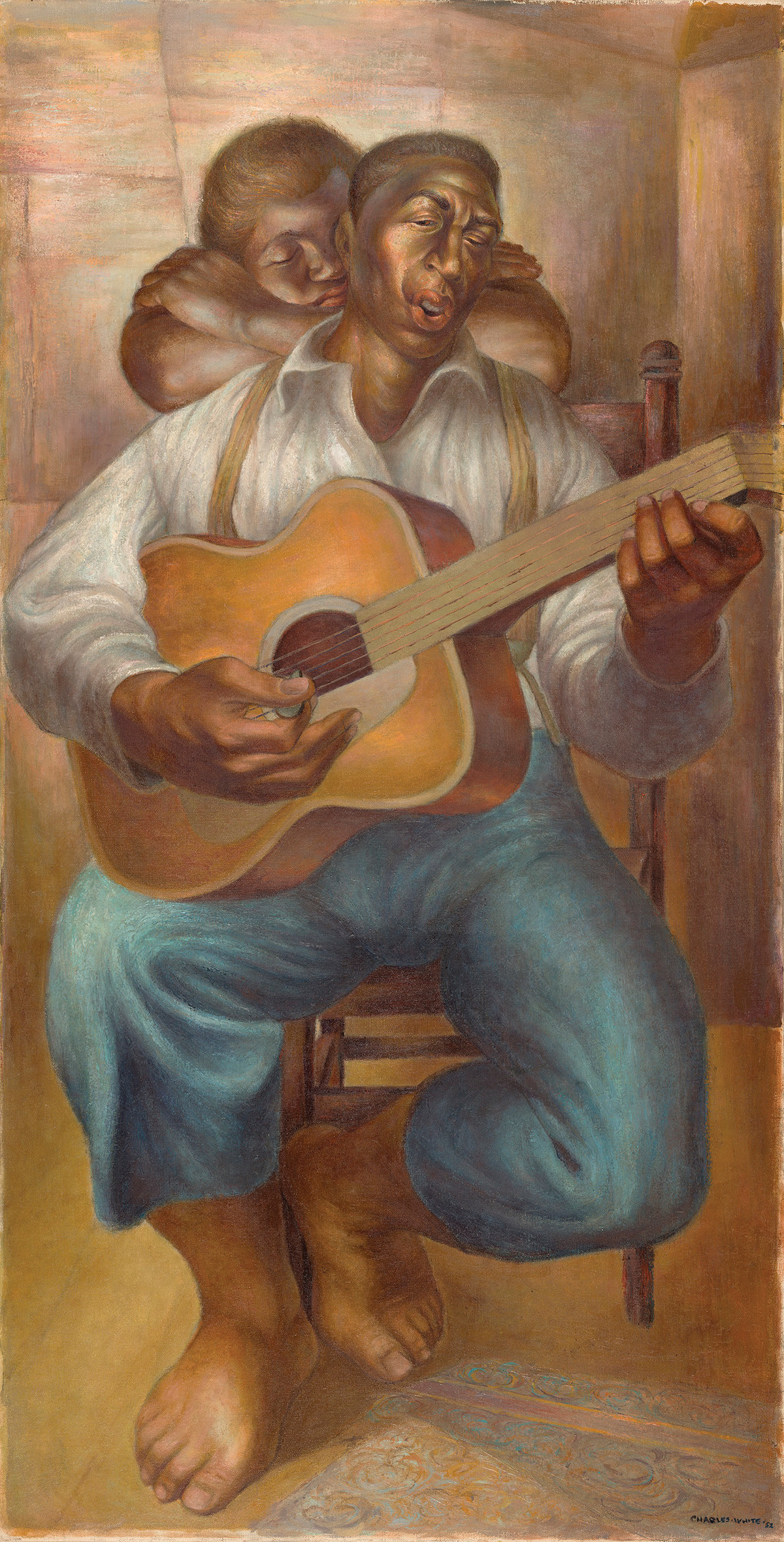The Sound of Wood and Steel
A new exhibition explores the guitar’s power and influence in American art and life
![YarbroughFEED <em>Girl with Guitar,</em> 1965, Robert Gwathmey, Oil on canvas (Catherine Dail Fine Art, New York and Los Angeles. ©2022 Estate of Robert Gwathmey/licensed by VAGA at Artists Rights Society [ARS], New York)](https://theamericanscholar.org/wp-content/uploads/2023/02/YarbroughFEED-1024x538.jpg)
Some years ago, I found myself standing beside the famed luthier Dana Bourgeois while he prepared the top of a Brazilian rosewood dreadnought guitar that he was building in his Lewiston, Maine, shop. Bourgeois is one of the most respected contemporary acoustic guitar builders, with dealers all over the world, and the list of musicians who have played his instruments includes the likes of Doc Watson, Bryan Sutton, Luke Bryan, and Natalie Maines. I had read a good bit about Bourgeois before I met him, and I already owned and loved one of his guitars and wanted to learn what made them sound so special.
One of the things he’s known for is personally voicing the top of each instrument before it is joined to the back and the sides. To accomplish this task, he uses a method called tap tuning. To the underside of an acoustic guitar’s top he glues several narrow strips of wood called braces. The “luthier’s dilemma,” as Bourgeois puts it, is that if the top, which acts as a soundboard, is too thick or the braces are too strong, the instrument will not vibrate properly, and the guitar will lack resonance and sound dead. If, however, the top is too thin or the braces are too weak, the guitar, which is subjected to as much as 200 pounds of string tension, will literally pull itself to pieces.
While I watched, he held the braced side of the top—two joined pieces of Adirondack spruce—near his left ear. With his free hand, he started thumping the other side, his fingers moving from one spot to another, tapping it some 15 or 20 times. He stepped back over to his workbench, laid the top down, and began to shave minuscule curls of wood off the braces. Then he lifted it beside his ear and repeated the tuning process, after which he returned to the bench and shaved a bit more off the braces, then took a small sheet of sandpaper and sanded a bit of wood off the treble side of the top. Once again, he repeated the tapping process. Finally, he smiled and laid the top down on his workbench. “I think our friend here,” he said, pointing at the top, “is pretty much done.”
I started playing guitar in early September 1965—I can date this beginning so precisely because the lessons were a present from my father when I turned nine at the end of August. The man who taught me was named Harry Trammell, and he worked for the Department of Agriculture’s Soil Conservation Service in my hometown of Indianola, Mississippi. If the name of the town sounds familiar, it is most likely because Indianola is also the hometown of the great blues guitarist B. B. King. In addition, countless other great bluesmen were born close by, among them Robert Johnson, Charley Patton, Skip James, and John Lee Hooker. Though I had grown up being exposed to country music and bluegrass, I had not been impervious to “the British invasion,” which I knew had its roots in the Delta blues, and I was motivated to learn to play by my desire to start a rock band. I eventually did that, but only after playing between the ages of 10 and 12 in a country combo with Mr. Trammell himself and a local football coach.
Though it seems preposterous today, I’d wanted to play guitar in those days not just because I loved the sounds emanating from it but also because I’d bought into the notion that it might do for me what it had done for the great bluesmen: deliver me from a life in the cotton field. I had watched my tenant-farmer parents and grandparents work from dawn till dusk for very little, and I knew I did not want their lives. I first looked to the guitar as a means of escape, but fortunately I had enough sense to figure out by high school that true musicians had some skill that I lacked, so I turned to my other love—literature, specifically the novel—and found a voice and a life in words. Ironically, that life has afforded me enough income and enough leisure time to take music lessons from some first-rate guitarists and to own and play some first-rate instruments, including quite a few vintage Martins and Gibsons and a number of guitars built by Dana Bourgeois. Every one of them is different from all the others.
The first thing I do each day is pull one of the seven guitars I currently own out of its case. I place it on a stand in my study and play it off and on all day. My study is next to our bedroom, and I nearly always go to bed a couple of hours after my wife. I can’t play late at night without waking her, so I’m usually just sitting there reading. Even so, I leave the instrument out until the last moment. My wife once asked me why I don’t put it away sooner, and without having to think, I said, “I like its company.”
Personality attaches itself to acoustic guitars just as easily as it resists attachment to, say, coffee tables. Nearly all examples of both are made of wood. There the similarities cease. The coffee table, no matter how attractive or valuable, is in the end merely functional. You set your coffee cup on it, you stand your wine glass there, you lay the morning paper there. About the only time it might seem endowed with personality is when you bang your shin on it in the dark and call it a name casting doubt on its lineage. The guitar, meanwhile, has a voice and a personality of its own, which are the result of numerous factors, chief among them the woods out of which it was built and the craftmanship put into constructing it. The voice and temperament of the guitar are subject to radical changes depending on the environment in which it finds itself. If its surroundings are too humid, the top will swell, throwing it out of tune. If they are too arid, the top will shrink, which lowers the action and causes fret buzz and other problems, including cracks. An acoustic guitar will punish you for neglect. You have to respect it in order for it to respect you and grant you the use of its voice.
“Storied Strings: The Guitar in American Art”—an exhibition, currently at the Virginia Museum of Fine Arts in Richmond, that’s moving in late May to the Frist Art Museum in Nashville—frequently depicts the symbiotic relationship between the guitar and the player. Working musicians display a wide array of attitudes toward their instruments. Some think of them in the most personal terms, as they might a loved one. No other guitar but that guitar will do. The iconic folksinger Odetta might fall into this camp. Trained as an opera singer but convinced that her race would prove a constant stumbling block, she taught herself to play guitar and became one of the most prominent figures of the ’50s and ’60s folk revival. Bob Dylan, after hearing her for the first time, got rid of his electric guitar and bought a Gibson acoustic like hers. In Otto Hagel’s 1958 portrait, included in the show, she appears to regard the instrument with nothing less than reverence, clutching it to her heart and holding it close to her face while she plays, her gaze trained on the fingers of her left hand as they fret the strings. Odetta was a large, powerfully built woman, and looking at Hagel’s photograph, one gets the feeling that prying the guitar away from her would not be an easy task.
At the opposite extreme are musicians like Woody Guthrie, photographed in 1943 by Al Aumuller, shown wearing a flannel shirt and mariner’s cap, in his hands a Gibson L-00 with a message taped to the top: this machine kills fascists. It’s open to question whether Guthrie would have been able to tell you what specific model Gibson he was playing. He owned and played hundreds of guitars over the course of his career. Most of them were Martins, typically small bodied like Guthrie himself. Some he lost; others he reportedly gave away. Many fine musicians whom I’ve known are thoroughly unsentimental about the instruments they play, regarding them as tools, much as I might regard the keyboard on which I’m typing these words. Guthrie took things a step further, viewing the guitar in mechanistic terms, seeing it as a political weapon.
Two of the oil paintings in this immensely rewarding exhibition speak to me in an almost haunting manner: Charles White’s 1952 work Goodnight Irene and Robert Gwathmey’s Girl with Guitar from 1965. White, associated with the Harlem Renaissance, was born in Chicago, but his mother was born in Mississippi. The painting depicts a barefoot Black man playing acoustic guitar in what appears to be a cabin while a woman stands behind him, eyes closed, head resting on his broad shoulders. The song “Goodnight Irene,” originally recorded by the bluesman Huddie “Lead Belly” Ledbetter in 1933, is likely to be recognized by almost everyone, and that familiarity, coupled with the images in the painting, will surely suggest the Delta blues to anyone acquainted with the blues tradition. But it’s worth noting that Lead Belly was from Louisiana and a very eclectic musician who played not only guitar but also violin, mandolin, and accordion, drawing from a variety of musical genres. In Gwathmey’s Girl with Guitar, we see a young Black woman alone on her porch with a guitar, her eyes shut tight, the long, slim fingers of her left hand forming a chord on the fretboard while her right hand is draped across the guitar body, dangling uselessly. She can put it to no good use because the guitar lacks both strings and a bridge. I was previously unfamiliar with Gwathmey’s work, but I have learned that he was considered a social realist, and it’s hard not to see a message in the painting: the woman has an instrument, she has the long fingers of Robert Johnson (and appears to be forming the same chord we see in the ubiquitous 1936 studio portrait of Johnson that has adorned so many records and CDs), but until she can afford to get the guitar outfitted with a bridge and strings, she has no voice.
These two images together took me back to a day in the spring of 1971 when I stood on the porch at my grandmother’s house, my shiny new Fender Coronado II suspended from my shoulders. The guitar was plugged into the small Sears amp I’d received the previous Christmas. By then I was leading my own rock band, and I was working on some blues riffs when a pickup truck pulled into the yard, turned around, and backed up to the porch. In the truck bed was a couch that my grandmother had just purchased from a furniture store in nearby Leland. Two Black men got out of the truck, the driver in his mid-40s, I would have guessed, the other man considerably younger. While I kept right on playing, my grandmother came out and held the door open, and the two men let down the tailgate, lifted the couch out, carried it up the steps and into the house. I noticed the older man glance at me as he went by.
When they came back out, he started toward the steps, then stopped and turned around. “Excuse me,” he said. “Sounds like you must’ve been listening to B. B.”
In 1971, racial passions were running high in the Mississippi Delta. Though the U.S. Supreme Court had determined in Brown v. Board of Education, back in 1954, that the “separate but equal” approach to public schooling was unconstitutional, Delta whites had by and large ignored the ruling until the federal courts finally forced the integration of the public schools, prompting a mass exodus of whites to segregation academies. I only mention this to explain why I was surprised that the delivery man had spoken to a white teenager who was a complete stranger. I was even more surprised when I heard myself say, “Yes, sir,” which I had been trained since the cradle not to do when speaking to a Black man.
“You know where B. B. got that lick you just played?” he asked.
I hoped my grandmother would remain inside, fussing with her new couch. “No, sir,” I said.
“Got it from T-Bone Walker. You ever listened to him?”
I hadn’t listened to him, though I’d read about him in the liner notes on rock albums where he was cited as an important influence. “No, sir,” I said.
“B. B.’s got a little different touch, plays it a little smoother. Want me to show you how T-Bone played it?”
I don’t know if I spoke at all. I just know I lifted the strap over my head and handed him the guitar. I tried to hand him my pick, too, but he said he didn’t need it. Rather than strap on the instrument, he knelt on one knee and balanced my Fender on the other. “B. B. plays it like this,” he said. Using his thumbnail, he ripped off the passage that for the past week or so I’d been mangling. It sounded just like it did when B. B. played it on his album Indianola Mississippi Seeds. “And then T-Bone,” he said, “he played it like this.” Nothing like the sound that burst from my little Sears amp had ever come out of it before or ever would again. It was raw, ghostly, unforgettable. I still hear it more than half a century later. “Without listening to T-Bone,” he said, rising and handing me back my guitar, “B. B. wouldn’t be B. B.” He smiled, revealing a couple of gaps between his teeth. “Maybe one day folks’ll say you’re you because you listened to B. B. That’s kinda how things work.”
As he turned to leave, I asked his name.
Again that smile. “I’m James Thomas,” he said, “but most folks just call me Son.”
During the next quarter of a century, until his death from a stroke in 1993, James “Son” Thomas, who made a living digging graves, would become famous for appearing in several films about the blues. He would perform and record all over the world. He was also a sculptor who used unfired clay that he’d dug out of the Yazoo River, and he saw his work displayed at the Corcoran Gallery of Art in Washington, D.C. While there, he was introduced to an admirer named Nancy Reagan. According to his New York Times obituary, Son Thomas was fond of saying, “Black and white people have to stick together, because we’re all going to the same place: down in the clay.”
I have little doubt that Son Thomas, were he alive today, would find much to admire in “The Guitar in American Art,” in which one work after another so aptly conveys the charm, the mystery, and the transformative power of these instruments fashioned from the most ordinary materials. Until someone plays them, they’re nothing but wires and wood.

